._Child_Labor%2C_Cranberry_Bog%2C_1939.jpg)
Child labour refers to the employment of children in any work that deprives children of their childhood, interferes with their ability to attend regular school, and that is mentally, physically, socially or morally dangerous and harmful. This practice is considered exploitative by many international organisations. Legislation across the world prohibit child labour.These laws do not consider all work by children as child labour; exceptions include work by child artists, family duties, supervised training, certain categories of work such as those by Amish children, some forms of child work common among indigenous American children, and othe
Child labour has existed to varying extents, through most of history. During the 19th and early 20th centuries, many children aged 5–14 from poorer families still worked in Europe, the United States and various colonies of European powers. These children mainly worked in agriculture, home-based assembly operations, factories, mining and in services such as news boys. Some worked night shifts lasting 12 hours. With the rise of household income, availability of schools and passage of child labour laws, the incidence rates of child labour fell.
In developing countries, with high poverty and poor schooling opportunities, child labour is still prevalent. In 2010, sub-saharan Africa had the highest incidence rates of child labour, with several African nations witnessing over 50 percent of children aged 5–14 working.Worldwide agriculture is the largest employer of child labour.Vast majority of child labour is found in rural settings and informal urban economy; children are predominantly employed by their parents, rather than factories.[14] Poverty and lack of schools are considered as the primary cause of child labour.
Globally the incidence of child labour decreased from 25% to 10% between 1960 and 2003, according to the World Bank.Nevertheless, the total number of child labourers remains high, with UNICEF and ILO acknowledging an estimated 168 million children aged 5–17 worldwide, were involved in child labour in 2013.
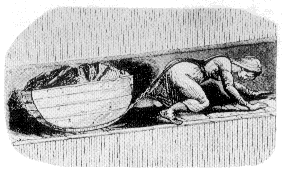
CAUSES-
primary cause-International Labour Organisation (ILO) suggests poverty is the greatest single cause behind child labour.For impoverished households, income from a child's work is usually crucial for his or her own survival or for that of the household. Income from working children, even if small, may be between 25 and 40% of the household income. Other scholars such as Harsch on African child labour, and Edmonds and Pavcnik on global child labour have reached the same conclusion.
Lack of meaningful alternatives, such as affordable schools and quality education, according to ILO, is another major factor driving children to harmful labour. Children work because they have nothing better to do. Many communities, particularly rural areas where between 60–70% of child labour is prevalent, do not possess adequate school facilities. Even when schools are sometimes available, they are too far away, difficult to reach, unaffordable or the quality of education is so poor that parents wonder if going to school is really worth it.
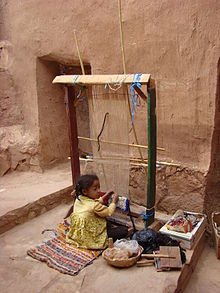
cultural cause-
in European history when child labour was common, as well as in contemporary child labour of modern world, certain cultural beliefs have rationalised child labour and thereby encouraged it. Some view that work is good for the character-building and skill development of children. In many cultures, particular where the informal economy and small household businesses thrive, the cultural tradition is that children follow in their parents' footsteps; child labour then is a means to learn and practice that trade from a very early age. Similarly, in many cultures the education of girls is less valued or girls are simply not expected to need formal schooling, and these girls pushed into child labour such as providing domestic services.
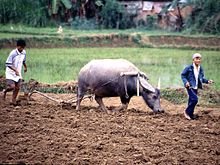
LAWS-
Almost every country in the world has laws relating to and aimed at preventing child labour. International Labour Organisation has helped set international law, which most countries have signed on and ratified. According to ILO minimum age convention (C138) of 1973, child labour refers to any work performed by children under the age of 12, non-light work done by children aged 12–14, and hazardous work done by children aged 15–17. Light work was defined, under this Convention, as any work that does not harm a child's health and development, and that does not interfere with his or her attendance at school. This convention has been ratified by 135 countries.[citation needed]
The United Nations adopted the Convention on the Rights of the Child in 1990, which was subsequently ratified by 193 countries. Article 32 of the convention addressed child labour, as follows:
...Parties recognise the right of the child to be protected from economic exploitation and from performing any work that is likely to be hazardous or to interfere with the child's education, or to be harmful to the child's health or physical, mental, spiritual, moral or social development.
Under Article 1 of the 1990 Convention, a child is defined as "... every human being below the age of eighteen years unless, under the law applicable to the child, a majority is attained earlier." Article 28 of this Convention requires States to, "make primary education compulsory and available free to all.
195 countries are party to the Convention; only two nations have not ratified the treaty, Somalia and the United State
In 1999, ILO helped lead the Worst Forms Convention 182 (C182), which has so far been signed upon and domestically ratified by 151 countries including the United States. This international law prohibits worst forms of child labour, defined as all forms of slavery and slavery-like practices, such as child trafficking, debt bondage, and forced labour, including forced recruitment of children into armed conflict. The law also prohibits the use of a child for prostitution or the production of pornography, child labour in illicit activities such as drug production and trafficking; and in hazardous work. Both the Worst Forms Convention (C182) and the Minimum Age Convention (C138) are examples of international labour standards implemented through the ILO that deal with child labour.
In addition to setting the international law, the United Nations initiated International Program on the Elimination of Child Labour (IPEC) in 1992. This initiative aims to progressively eliminate child labour through strengthening national capacities to address some of the causes of child labour. Amongst the key initiative is the so-called time-bounded programme countries, where child labour is most prevalent and schooling opportunities lacking. The initiative seeks to achieve amongst other things, universal primary school availability. The IPEC has expanded to at least the following target countries: Bangladesh, Brazil, China, Egypt, India, Indonesia, Mexico, Nigeria, Pakistan, Democratic Republic of Congo, El Salvador, Nepal, Tanzania, Dominican Republic, Costa Rica, Philippines, Senegal, South Africa and Turkey.
Targeted child labour campaigns were initiated by the International Programme on the Elimination of Child Labour (IPEC) in order to advocate for prevention and elimination of all forms of child labour. The global Music against Child Labour Initiative was launched in 2013 in order to involve socially excluded children in structured musical activity and education in efforts to help protect them from child labour.
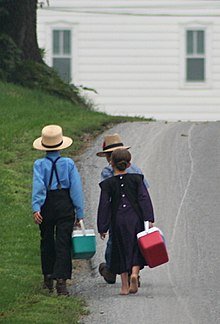
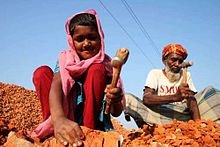
Child labour was a particular target of early reformers. William Cooke Tatlor wrote at the time about these reformers who, witnessing children at work in the factories, thought to themselves: 'How much more delightful would have been the gambol of the free limbs on the hillside; the sight of the green mead with its spangles of buttercups and daisies; the song of the bird and the humming bee...'
But for many of these children the factory system meant quite literally the only chance for survival. Today we overlook the fact that death from starvation and exposure was a common fate before the Industrial Revolution, for the pre-capitalist economy was barely able to support the population. Yes, children were working. Formerly they would have starved. It was only as goods were produced in greater abundance at a lower cost that men could support their families without sending their children to work. It was not the reformer or the politician that ended the grim necessity for child labour; it was capitalism.

.jpeg)
Hi. I am @greetbot - a bot that uses AI to look for newbies who write good content!

Your post was approved by me. As reward it will be resteemed by a resteeming service.
Resteemed by @resteembot! Good Luck!
The resteem was paid by @greetbot
Curious?
The @resteembot's introduction post
Get more from @resteembot with the #resteembotsentme initiative
Check out the great posts I already resteemed.